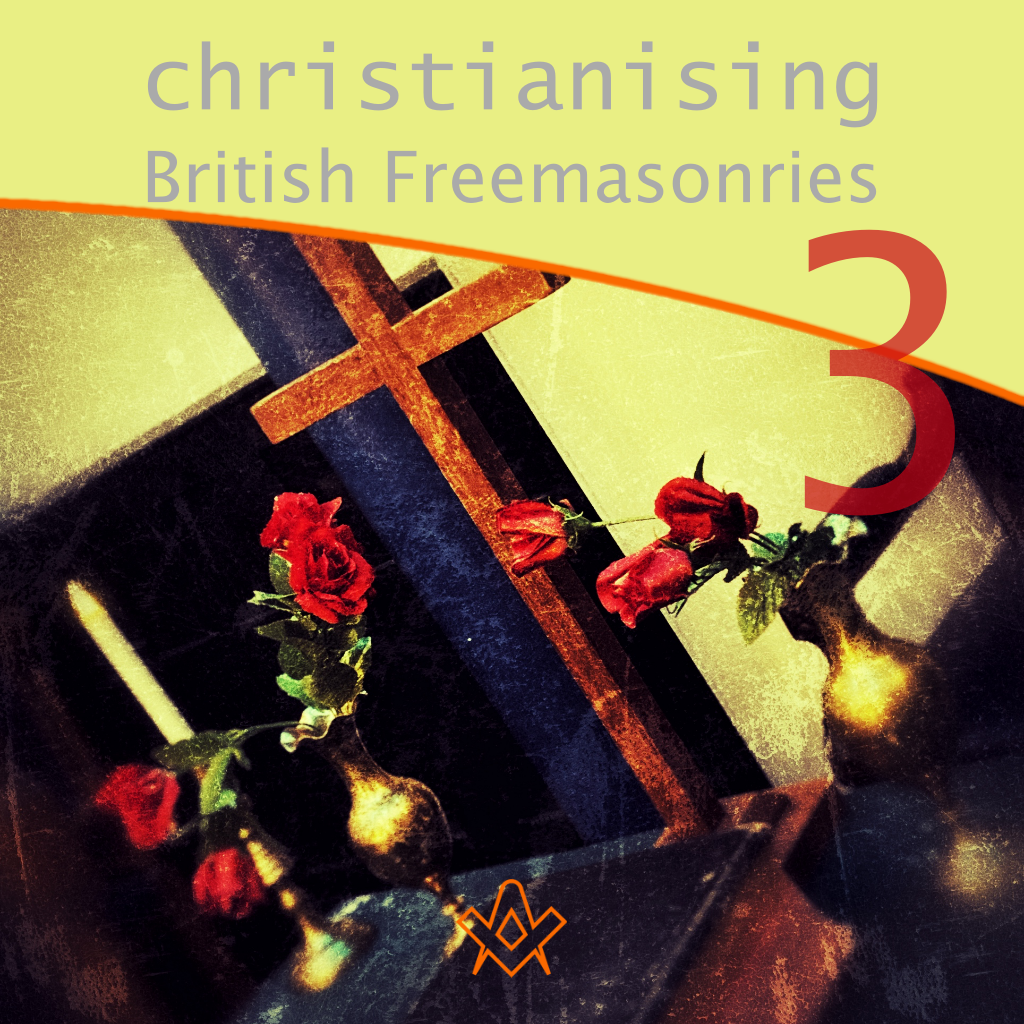Part 3. French Perdition: ‘…for what fellowship hath righteousness with unrighteousness’? (Or, what fellowship doth righteousness have with self-righteousness?)
During the terrible years 1939-45 many ecclesiastics and Masons were united in their ideals, sometimes in their martyrdom.
To return simply to a hostile status quo seemed to them impossible, immoral.
It is really from that period that we can date this sincere effort on both sides to draw up the balance sheet of the causes of misunderstanding, and, without rushing things, at least to study in common a common difficulty.
(Alec Mellor, Our Separated Brethren, the Freemasons.)
This four-part series considers;
(i) the separation of British Freemasonries from the Grand Orient of France (GOdF); and
(ii) maintaining fraternity with the Prussian Grand Lodge of the Three Globes. Both decisions impact on the relationship of Freemasonries with religion, both in their different ways can be understood as battles for the soul (“essence”, Carnarvon) of Freemasonry.
However, Freemasonries and religions, are ‘by schisms rent asunder’ – a failure to agree on fundamental principles.
Part 1. French Infidelity: A New Covenant. Following a consideration of the Grand Orient de France’s (GOdF) decision to remove the requirement for initiates to;
(i) believe in God; or (ii) believe in the immortality of the soul; Pro Grand Master Carnarvon considered this opposed to the principles upon which civilisation and Freemasonry were based.
A Committee was formed ‘to enquire into the facts of the case and to report back with recommendations’.
If that wasn’t enough for one night, it was followed by, ‘The German Question’.
Part 2. German Fidelity: For if the trumpet gives an uncertain sound, who shall prepare himself to the battle?
The claims of the Earl of Limerick and Grand Registrar McIntyre that, prior to the Union in 1813, English freemasonries were Christian-only, was challenged by Revd Smith PGChaplain but to no effect.
Attending the meeting was R.F. Gould who became the foremost historian of English freemasonries; surely, he knew otherwise yet remained silent.
It was decided that Christian-only jurisdictions do not need to recognise the freemasonry of non-Christians even though in recognised jurisdictions. An uncertain sound’?
Part 4. The 1877-8 arrival of Post Truth: ‘…. new heavens and a new earth…the former shall not be remembered’.

Seal of the Grand National Mother Lodge ‘The Three Globes’ of Berlin in Germany By Akazia030 – Own work, Public Domain – wikimedia.
Part 3. French Perdition: ‘…for what fellowship hath righteousness with unrighteousness’?
(Or, what fellowship doth righteousness hath with self-righteousness?)
The Tree of the Grand Orient, allegoric engraving of the Grand Orient de France as the centre of French Masonic Organisations
IMAGE LINKED: wikimedia Attribution 4.0 International (CC BY 4.0)
At the December 1877 meeting, a committee was appointed to consider the GOdF changes to the 1st and 2nd paragraphs of its Constitution.
WAS |
NOW |
1. Its principles are the existence of God, the immortality of the soul, and human solidarity. |
1. Its principles are absolute liberty of conscience and human solidarity |
2. It regards liberty of conscience as the common right of every man and excludes no person on account of his belief. |
2. It excludes no person on account of his belief. |
The Committee had deliberated and recommended four resolutions for the March 1878 meeting.
Paragraph 2 above saying, ‘It excludes no person on account of his belief’ was, of course, untrue.
To be a GOdF Mason you were required to believe in absolute liberty of conscience and human solidarity.
Human solidarity presumably entails humanistic policies, practises and procedures; these to be described and understood in ‘natural’ terms, to the exclusion of terms pertaining to ‘supernatural’ concepts, entities or nomenclature.
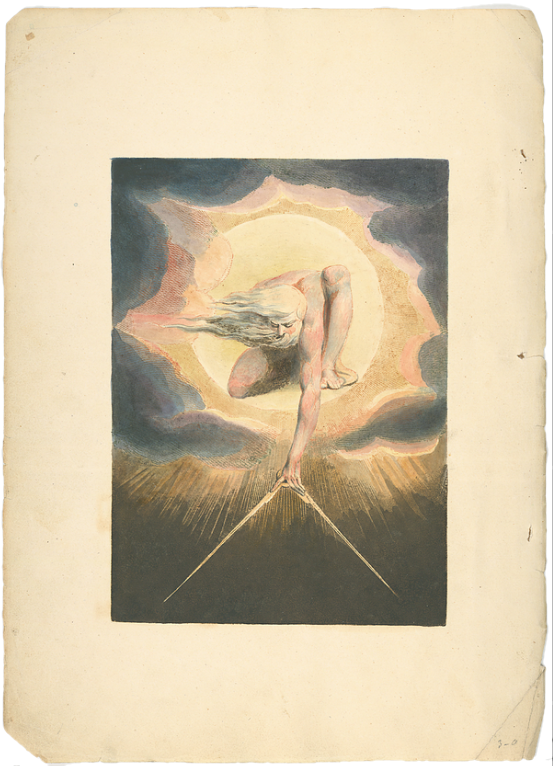
Europe: a Prophecy, [Frontispiece] William Blake, Lambeth, 1794
IMAGE LINKED: wikimedia Attribution 4.0 International (CC BY 4.0)
‘Absolute liberty of conscience’? ‘In those days there was no King in Israel, every man did that which was right in his own eyes.’(Judges 21v25 KJV.)
How might ‘liberty of conscience’ be differentiated from selfish/self-centred choices: righteousness from self-righteousness?
The United Nations Declaration of Human Rights 1945/8, upon which the UK Equality Act 2010 is based, enshrines an entitlement to
(i) have a religion;
(ii) change one’s religion; and
(iii) have no religion.
Might this be the legal basis for a contemporary understanding of liberty of conscience? Are Freemasons allowed these rights?
The EARL OF Carnarvon (from The Throne): ‘The Committee have carefully considered this action on the part of the GOdF and having regard to all the circumstances of the case they have unanimously agreed to recommend the following resolutions for the adoption of Grand Lodge:
1st Resolution: That that Grand Lodge views with profound regret GOdF removing from its Constitution a belief in the existence of TGAOTU because such an alteration is opposed to the traditions, practice, and feelings of all ‘true and genuine’ Masons from the earliest to the present time.
2nd Resolution: That this Grand Lodge, cannot recognize as ‘true and genuine’ Brethren any who have been initiated in Lodges which either deny or ignore that belief.
3rd Resolution: That the W. Masters of all Lodges holding under the Grand Lodge of England be directed not to admit any foreign Brother as a Visitor unless firstly, he is duly vouched for or unless his Certificate shows that he has been initiated according to the Ancient rites and ceremonies in a Lodge professing belief in TGAOTU and secondly not unless he himself shall acknowledge that this belief is an essential landmark of the Order.
4th Resolution: That a copy of the foregoing Resolutions be transmitted to the Grand Lodges of Scotland and Ireland, to each Grand Lodge with which this Grand Lodge is in communication, and to the W. Masters of all Lodges holding under the Grand Lodge of England.’
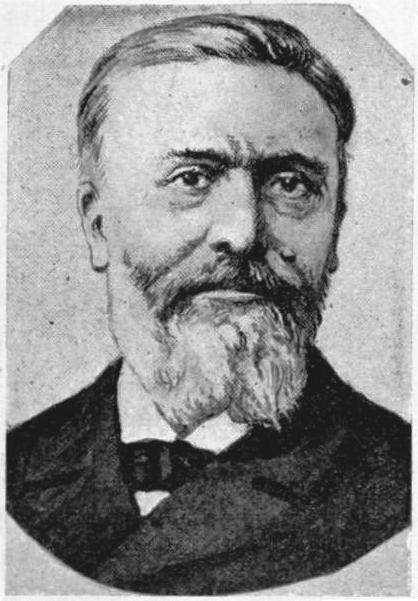
Frédéric Desmons, the French Calvinist Priest and Freemason
IMAGE LINKED: wikimedia Attribution 4.0 International (CC BY 4.0)
Frédéric Desmons, the French Calvinist Priest and Freemason who persuaded the Grand Orient de France in a vote to remove the term of the Great Architect of the Universe from their Constitution.
This precipitated a split with the United Grand Lodge of England and the birth of liberal or Latin Freemasonry.
– Source: Wikipedia
This was the most far-reaching action British freemasonries had proposed since the union in 1813.
It excluded a jurisdiction, long in fraternal amity, deciding that hitherto its initiates would not be regarded as ‘true and genuine’ Masons (or in contemporary parlance, ‘fake’ Masons).
At the previous meeting, the GOdF changes were condemned as ‘contrary to the essence and principles of civilisation and Freemasonry’.
Yet at this meeting, the changes were now deemed to be, ‘in opposition to the traditions, practise and feelings all “true and genuine” Masons from the earliest to the present time.’
Clearly, the rhetoric had cooled. However, it seems there were no principles, traditions, practise or feelings involved if non-Christian British Masons, seeking fraternity with the recognised Three Globes Lodge, were denied admission, ‘they were knocking on the wrong door’.
This, despite a petition, signed by a third of English lodges, claiming that the policy of the Three Lodges was ‘contrary to the first principles of Freemasonry’.
Just as Masons initiated in the GOdF post 1877, were to be regarded as not true and genuine Brethren; in the same way, the Three Globes regarded non-Christian British Masons.
More substantially, at the previous meeting, the principle of believing in the immortality of the soul was deemed, co-equal, with believing in God.
Yet, the proceedings of the March 1878 meeting are without mention of the immortality of the soul.
This writer is unable to find any official publication prior to 1877, or since, advising that English Freemasons were/are required to believe in ‘the immortality of the soul’.
Where did this come from? Is it still in force?
The Reunion of the Soul & the Body, from “The Grave,” a Poem by Robert Blair. After William Blake, engraving by Luigi Schiavonetti.
IMAGE LINKED: MET Open Access PD-Art Attribution 4.0 International (CC BY 4.0)
‘The real question of life after death isn’t whether or not it exists, but even if it does, what problem this really solves.’
– Ludwig Wittgenstein.
There remains an ‘uncertain sound’ regarding when a jurisdiction can seek to ‘interfere’.
Obviously, other than by subversion, a jurisdiction cannot interfere in the workings of another; it can only complain and if sufficiently offended, cease to recognise that jurisdiction on grounds of alleged irregularity.
That is to say, unable to accept a variant Freemasonry. Yet, how can a Christian-only Freemasonry be recognised as regular in the eyes of a universal Freemasonry and vice versa?
The VSL asks,
‘…what fellowship hath righteousness with unrighteousness and what communion hath light with darkness?’
– 2Cor 6v14 KJV
This raises the question: when does righteousness become self-righteousness and doing that which is right in one’s own eyes?
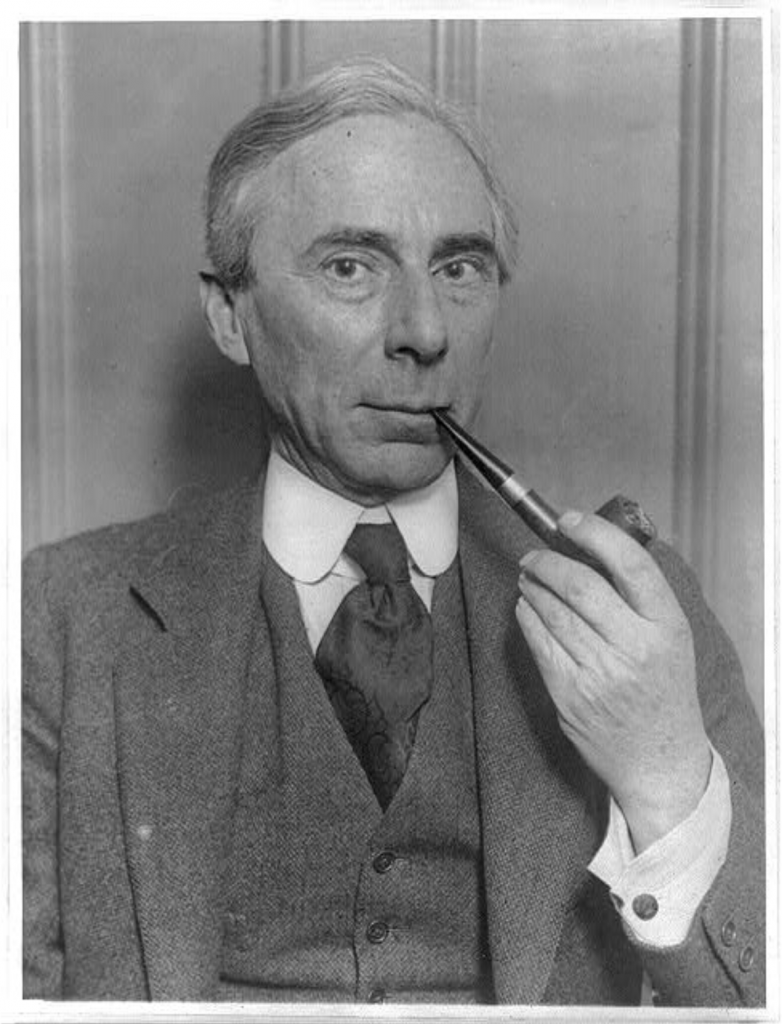
Bertrand Russell, Philosopher – Photo by Underwood & Underwood
IMAGE LINKED: Library of Congress Digital Collection Attribution 4.0 International (CC BY 4.0)
‘I would never die for my beliefs; they may be wrong.’
– Bertrand Russell
Part 4: Will seek to move beyond the legacy of the 1887-8 meetings.
In light of the contemporary Post Truth l’espirit de l’epoque, ways forward will be suggested to provide a basis for the continuation of a freemasonry which, genuinely, is neither a religion nor a substitute for it; and ‘free ourselves from the past’.
Article by: Gerald Reilly

Gerald Reilly was initiated in 1995 into St Osyth's Priory Lodge 2063. Essex. England (UGLE).
He was a founder member of Josh Heller's Allthingsmasonic, and with Josh co-wrote 'The Temple that Never Sleeps' (Cornerstone Books, 2006) he is committed to the development of e-Freemasonry.
Awarded the Norman B Spencer Prize, 2016.

Freemasonry: A French View
By: Roger Dachez (Author), Alain Bauer (Author)
Perhaps one should speak not of Freemasonry but of Freemasonries in the plural.
In each country Masonic historiography has developed uniqueness, but it is safe to say that one of the highest levels of scholarship has been in France.
This book is a case in point, as two of the best known French Masonic scholars present their own view of the worldwide evolution and challenging mysteries of the fraternity over the centuries.
The reader seeking to understand the origins of the world’s premier and most controversial secret society, and of the claims made for its various rites and rituals, will find this account of considerable use, as will those more informed who wish to review and reflect.
Some will find that the authors have revealed too much while others will wish they had given away more.
This is a valuable glimpse of what an eighteenth-century lyricist cautioned: Who can unfold the Royal Art? Or sing its secrets in a song? They’re safely kept in Mason’s heart, And to the ancient Lodge belong.
Alain Bauer is a Professor of Criminology in Paris, New York and Beijing. An adviser on many occasions to the French Government, he was Grand Master of the Grand Orient of France.
Roger Dachez is professor at the Paris Diderot University. A physician, he is President of the Institute Alfred Fournier in Paris and Secretary General of the Masonic Institute of France.

Scarlet and the Beast I: A history of the war between English and French Freemasonry
By: John Daniel (Author)
My research has revealed that there are two separate and opposing powers in Freemasonry.
One, headquartered in London, subscribes to and promotes an idolatrous and pantheistic view of the world. It is monarchist, capitalistic, wealthy, right-wing.
The other, in Paris, is atheistic and humanistic in origin and outlook. It is republican, socialist, poor, left-wing.
One is Scarlet. The other, the Beast.
The breakthrough theory which I have developed with Scripture as my guide makes sense of the massive literature I have collected on Freemasonry as well as its apparent contradictions.
My library includes books written by members of and defectors from both English and French Freemasonry.
At the beginning of my research, like many other revisionist authors, I thought revisionist authors were reporting one single plot.
I gradually realized that many authors were exposing what in reality were often the machinations of one group of conspirators against the other.
The devices of both wings of Masonry were so similar that without Scripture as a guide, one could easily perceive only a single intrigue.
This interesting twist in the historical drama, confirmed again and again by my research, points to the existence of a struggle between the two powers in Freemasonry.
Although revisionist authors are supposedly concerned about one plot, I noticed that all exposes pointed to Paris as the center of an intrigue before World War I.
After the War, however, evidence points to the shift of intrigue to London.
I will explain this shift in the course of this book.
Book: by Gerald Reilly

The Temple That Never Sleeps
by Josh Heller and Gerald Reilly
Freemasons and E-Masonry Toward a New Paradigm
A revolutionary book for every Freemason.The two authors, American and UK Masons, present a radical view of Freemasonry for both today and tomorrow.
In addition to their ideas are those of numerous Internet Masons (E-Masons) from around the world who, by sharing the experience of their own Masonic journey, have provided stunning personal insight into the viability of the Craft in the Internet Age.
This book will challenge your understanding of Freemasonry today and how it might transform for future generations.
Recent Articles: by Gerald Reilly
 How can the allegory of the Tower of Babel teach us tolerance? Language can be a divide. Not confusion among languages but rather within language, a seriously unclear understanding of another’s world-view. We assume it is so different from our own and yet with clarity, a realisation there is more which unites than separates. |
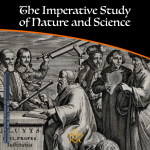 The Imperative Study of Nature and Science At some stage during Freemasonry's Second Degree, the candidate is advised that there is now permitted, something like, the extension of their research into the hidden mysteries of nature and science. Such is an excellent permission and one that each and every Freemason should pursue with awe and passion. |
 Pure Ancient Masonry; P4. A Companion in Rule, Building a better world P4. A Companion in Rule, Building a better world - The four parts of Pure Antient Masonry comprise the ‘body’ Masonic; they are the building blocks of the vital relevance, through enhanced citizenship, wherein the soul of Freemasonry abides. |
 Pure Ancient Masonry; P3. The Master, Building Better Character Part 3: The Master, Building Better Character - Being raised is a transition from knowledge to wisdom. |
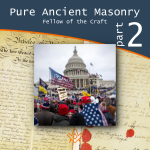 Pure Ancient Masonry; P2. A Fellow of the Craft Part 2: A Fellow of the Craft, Building Better Knowledge. Pure Antient Masonry consists of four parts. ‘Building the Temple’ is the fundamental Masonic allegory for building better people; this must be understood as a seamless whole: |
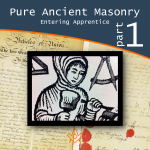 Pure Ancient Masonry; P1. An Entering Apprentice Part 1. An entering apprentice: Building Better Communities; Pure Antient Masonry consists of four parts. ‘Building the Temple’ is the fundamental Masonic allegory for building better people to build a better world |
 Pure Ancient Masonry; Intrduction This series will consider the defining characteristics, lessons and benefits of Three Degrees, the Order of the Royal Arch and when conjoined, Pure Ancient Masonry. |
 The Christianising of British Freemasonries - P4 This concluding article in the series considers the separation of British freemasonries from the Grand Orient of France (GOdF) and maintaining fraternity with the Prussian Grand Lodge of the Three Globes. |
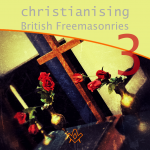 The Christianising of British Freemasonries - P3 Discover the battle for the 'soul' of Masonry. Part 3. French Perdition: ‘…for what fellowship hath righteousness with unrighteousness’? |
 The Royal Arch – ‘the fourth step in regular Freemasonry’ United Grand Lodge of England, has now designated the Royal Arch, the fourth step in regular Freemasonry, it therefore must be concluded that…publications…should now be revised, and based on attracting to the benefits of the four steps. |
 The Christianising of British Freemasonries - P2 How might the battle for the souls of Freemasonries be identified in a way that ensures thriving in the 21st Century? There is no guarantee of the immortality of the soul of Freemasonry! ‘We study the past in order to free ourselves from it.’ (Hariri) |
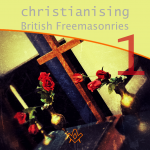 The Christianising of British Freemasonries - P1 This four-part series considers: 1. the separation of British Freemasonries from the Grand Orient of France (GOdF); and, 2. maintaining fraternity with the Prussian Grand Lodge of the Three Globes. |
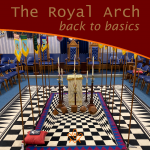 The Royal Arch - Back to Basics In the Royal Arch ceremony, the sojourners are buried with their tools in a vault. The sun, at its highest, provides enlightenment and the principal sojourner is returned to the former companions of his toil |
 The Holy Land and the Holy Sites P4 Fourth instalment of the four-part series, considers ‘masonic’ aspiration and activity regarding the Holy Land and The Holy Sites |
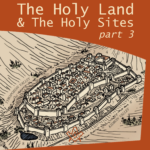 The Holy Land and The Holy Sites P3 Third instalment of the four-part series, considers ‘masonic’ aspiration and activity regarding the Holy Land and The Holy Sites |
 The Holy Land and The Holy Sites P2 The four-part series will consider ‘masonic’ aspiration and activity regarding the Holy Land and The Holy Sites |
 The Holy Land and The Holy Sites P1 In this four-part series, we will consider ‘masonic’ aspiration and activity regarding the Holy Land and The Holy Sites |
 Science and Citizenship: Towards a 21st Century Masonic Mindset. |
 Towards a 21st Century Masonic Mindset: Part 3 ‘Freemasonries’ and the Fourth Industrial Revolution |
 Towards a 21st Century Masonic Mindset: Part 2: ‘Freemasonries’ and Religiosity. |
 Towards a 21st Century Masonic Mindset: Part 1: ‘Freemasonries’ and Governance. |
masonic knowledge
to be a better citizen of the world
share the square with two brothers

click image to open email app on mobile device


